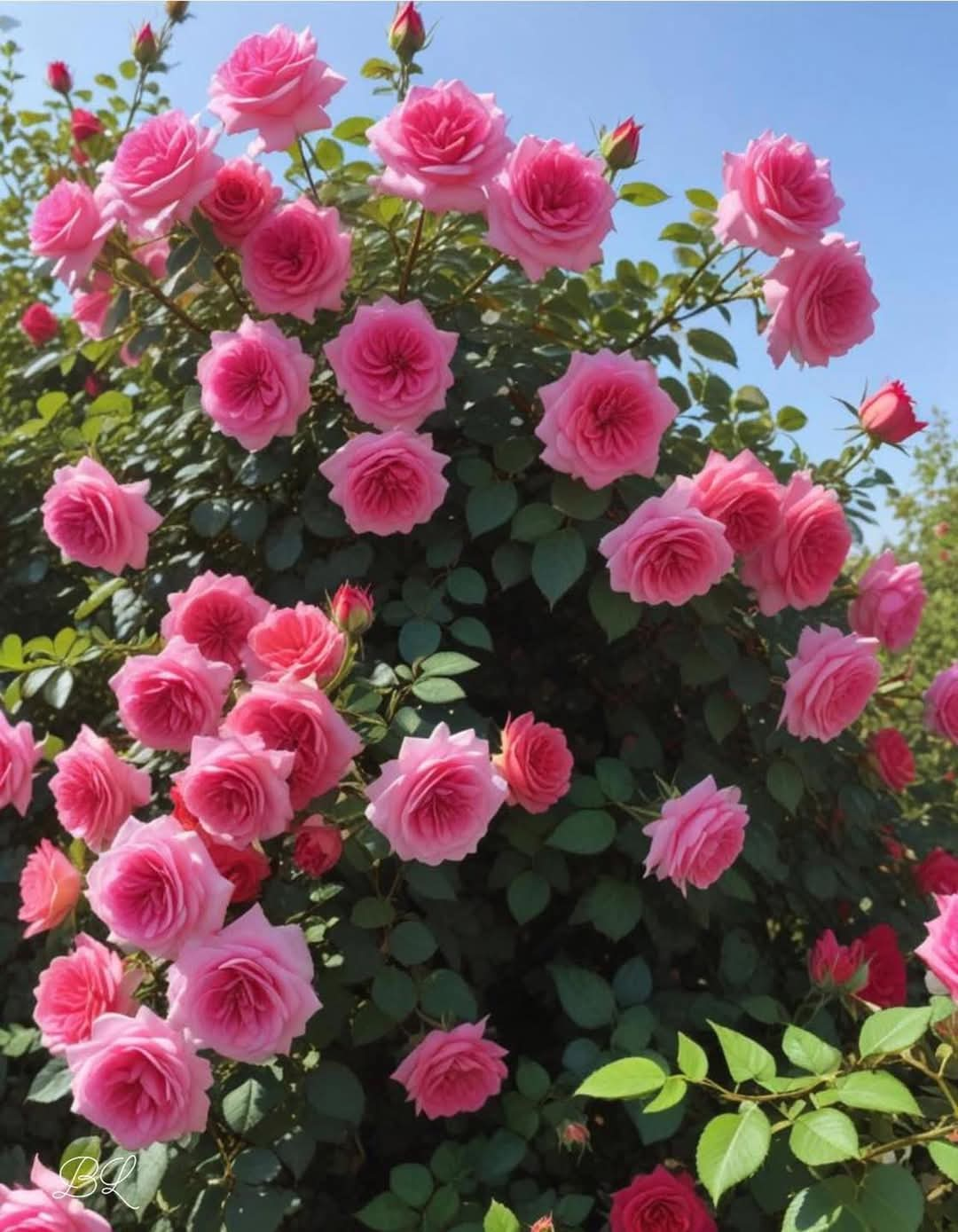Climbing Pink Roses (Rosa) are a gardener’s dream, offering a stunning display of fragrant, cascading blooms that can transform any outdoor space. Whether you’re looking to adorn a trellis, arbor, fence, or wall, these roses bring elegance, charm, and a touch of romance to your garden. With their vigorous growth and abundant blooms, Climbing Pink Roses are a versatile and rewarding addition to any landscape. Let’s explore how to grow and care for these enchanting roses.
Why Choose Climbing Pink Roses?
Abundant Blooms: These roses produce an abundance of fragrant, pink flowers that create a breathtaking display.
Vertical Beauty: Perfect for vertical gardening, they can be trained to climb structures, adding height and dimension to your garden.
Fragrance: The sweet, floral scent of Climbing Pink Roses adds an extra layer of enjoyment to your outdoor space.
Versatility: Suitable for trellises, arbors, fences, walls, and even as a standalone focal point.
How to Grow and Care for Climbing Pink Roses
1. Light Requirements
Full Sun: Climbing Pink Roses thrive in full sun, requiring at least 6 hours of direct sunlight daily for optimal growth and blooming.
Morning Sun: If possible, provide morning sun to dry dew quickly and reduce the risk of fungal diseases.
2. Watering
Consistent Moisture: Keep the soil consistently moist but well-drained. Water deeply and regularly, especially during dry spells.
Avoid Waterlogging: Ensure proper drainage to prevent root rot. Mulching around the base of the plant can help retain moisture.
3. Soil
Well-Draining and Fertile: Plant in well-draining soil enriched with organic matter like compost or well-rotted manure.
pH Level: A slightly acidic to neutral pH (6.0-7.0) is ideal for healthy growth.
4. Temperature
Moderate Climate: Climbing Pink Roses thrive in moderate temperatures, ideally between 60-75°F (16-24°C).
Hardiness: They are hardy in USDA zones 5-9. Protect from extreme heat and frost by providing shade or covering during harsh weather.
5. Humidity
Moderate Humidity: These roses prefer moderate humidity levels. Ensure good air circulation to prevent fungal diseases like powdery mildew.
6. Fertilizing
Balanced Fertilizer: Apply a balanced, slow-release fertilizer in early spring and again mid-season to support healthy growth and abundant blooming.
Mulching: Mulch around the base of the plant to retain moisture, regulate soil temperature, and suppress weeds.
Planting Climbing Pink Roses
Choose the Right Location: Select a sunny spot with well-draining soil and enough space for the rose to climb and spread.
Prepare the Soil: Dig a hole twice as wide and deep as the root ball. Mix in compost or organic matter to enrich the soil.
Plant the Rose: Place the rose in the hole, spreading the roots out. Fill the hole with soil, ensuring the graft union (the swollen area where the rose is grafted onto the rootstock) is just below the soil surface.
Water Thoroughly: Water deeply after planting to settle the soil and eliminate air pockets.
Training and Pruning
Training: As the rose grows, gently tie the canes to a trellis, arbor, or fence using soft ties. Encourage horizontal growth for more blooms.
Pruning: Prune in late winter or early spring before new growth begins. Remove dead, damaged, or diseased wood and cut back about one-third of the plant to encourage new growth and improve air circulation.
Pest and Disease Control
Common Pests: Watch for aphids, spider mites, and Japanese beetles. Treat infestations with insecticidal soap or neem oil.
Diseases: Prevent fungal diseases like black spot and powdery mildew by ensuring good air circulation and avoiding overhead watering.
Why You’ll Love Climbing Pink Roses
Stunning Visual Appeal: The cascading pink blooms create a dramatic and romantic display in any garden.
Fragrance: The sweet, floral scent adds a sensory delight to your outdoor space.
Versatility: Perfect for vertical gardening, they can transform fences, walls, and trellises into living works of art.
Low Maintenance: With proper care, Climbing Pink Roses are relatively easy to grow and maintain.
Final Thoughts
Climbing Pink Roses are a true gem in the world of gardening, offering beauty, fragrance, and versatility. Whether you’re a seasoned gardener or a beginner, these roses will bring joy and elegance to your outdoor space. So, grab your gardening tools, choose a sunny spot, and get ready to grow a vertical masterpiece that will be the envy of your neighborhood. 🌿🌸🌹
